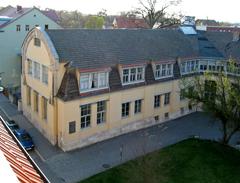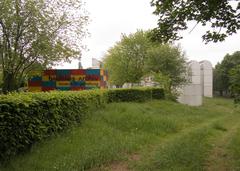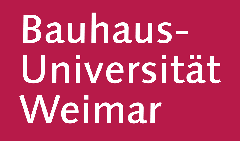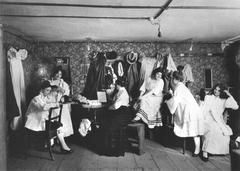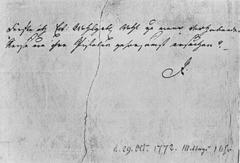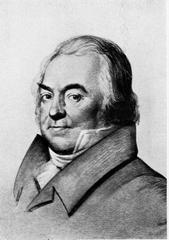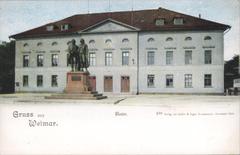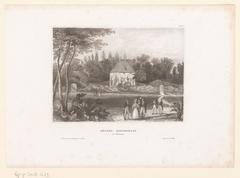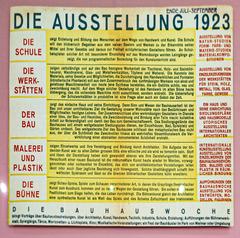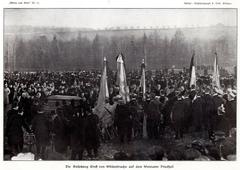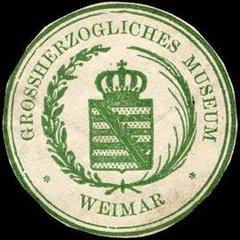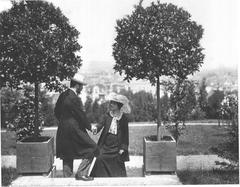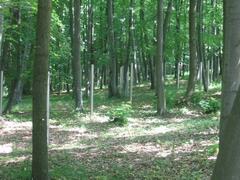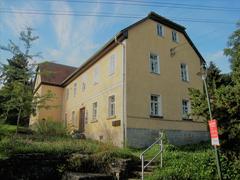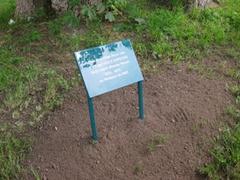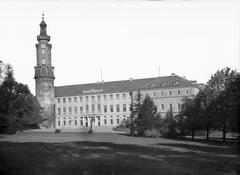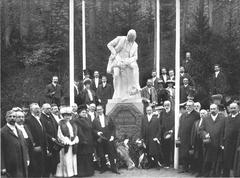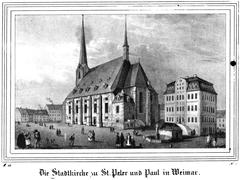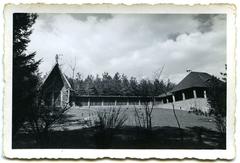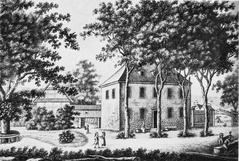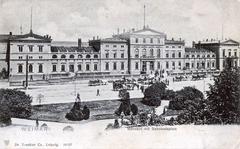
Jacobsfriedhof Weimar: Visiting Hours, Tickets, and Historical Insights
Date: 04/07/2025
Introduction
Jacobsfriedhof in Weimar, Germany, is the city’s oldest surviving cemetery—a site that embodies centuries of artistic, intellectual, and spiritual history. Established in the 12th century around the Jakobskirche (St. James’s Church), Jacobsfriedhof began as a burial ground for pilgrims on the Camino de Santiago. Over time, it became Weimar’s principal cemetery, witnessing the Reformation, Weimar Classicism, and the evolving customs of funerary art. Today, Jacobsfriedhof invites visitors to experience its tranquil atmosphere, explore the graves of notable historical figures, and appreciate its enduring cultural significance (Klassik Stiftung Weimar; Weimar.de).
Table of Contents
- Historical Overview
- Notable Monuments and Graves
- Visitor Information
- Nearby Attractions
- Cultural and Artistic Heritage
- Frequently Asked Questions (FAQ)
- Best Time to Visit
- Photography and Documentation
- Sustainability and Preservation
- Practical Tips for a Memorable Visit
- Summary and Recommendations
- References
Historical Overview
Jacobsfriedhof—also known as Jakobskirchhof—was founded in the 12th century as a cemetery for pilgrims journeying to Santiago de Compostela. Its strategic location outside Weimar’s medieval walls made it an important spiritual and communal space. From 1530 to 1818, it served as Weimar’s only cemetery, making it central to the city’s social and cultural evolution (Weimar Lese; Trek Zone).
After the opening of the Historical Cemetery in 1818, Jacobsfriedhof ceased to receive new burials by 1840. Portions of the site were later transformed into gardens, preserving its historical monuments while creating a peaceful green space. The cemetery’s enduring legacy is reflected in its monuments, gravestones, and the stories of those interred there (Ausflugsziele Weimar).
Notable Monuments and Graves
The Jakobskirche
At the heart of Jacobsfriedhof stands the Jakobskirche, a baroque church rebuilt between 1713 and 1715. Serving as a spiritual anchor for centuries, the church and its surrounding graves create a unique ensemble that reflects Weimar’s religious and civic life (Weimar Lese).
Kassengewölbe (Exchequer Vault)
Constructed in 1715, this mausoleum was originally private, later acquired by the state to serve as a communal vault for notable citizens who lacked family graves. Among those interred are Luise von Göchhausen and the parents of Charlotte von Stein. The baroque pavilion above the vault was reconstructed in 1913, restoring its architectural presence (de.wikipedia).
The Schiller Vault and the Poet’s Mystery
Friedrich Schiller, the renowned poet and philosopher, was initially buried here in 1805. His remains were later exhumed and transferred to the Fürstengruft, but DNA testing in 2008 cast doubt on their authenticity, fueling ongoing intrigue about the true location of his bones (Weimar Lese; Travelwriticus).
Graves of Other Notable Figures
- Lucas Cranach the Elder: Celebrated German Renaissance painter and Reformation ally (Weimar Lese).
- Christian August Vulpius: Writer and Goethe’s brother-in-law.
- Johann Karl August Musäus: Folklorist and Enlightenment figure.
- Christian Goethe: Father of Johann Wolfgang von Goethe.
Visitor Information
Location and Accessibility
Jacobsfriedhof is centrally located in the Jakobsviertel district, adjacent to Jakobskirche and within walking distance of Weimar’s main attractions such as the Goethe House, Bauhaus Museum, and the Historical Cemetery. It is accessible by foot, bicycle, or local bus from the city center. Limited street parking is available; public parking garages are recommended (Trek Zone).
Visiting Hours and Admission
- Hours: Open year-round during daylight hours, typically from sunrise to sunset. Extended hours may apply in summer; check local tourism sources for updates.
- Admission: Entry is free; no tickets required. Guided tours or special events may require advance booking (Klassik Stiftung Weimar).
Guided Tours and Visitor Tips
- Guided Tours: Available through Weimar’s tourist office, often included in broader city walking tours. English-language tours can be arranged upon request (Weimar Public Tours).
- Self-Guided Visits: Brochures and maps are available at the Weimar Tourist Information Center. The Audiala app offers audio guides and digital resources.
- Photography: Permitted for personal use; professional photography requires permission from Klassik Stiftung Weimar (Klassik Stiftung Weimar).
- Accessibility: Some paved paths are accessible, but uneven terrain may present challenges for wheelchair users.
Site Etiquette and Accessibility
- Maintain respectful silence; avoid disruptive behavior.
- Do not touch or climb on monuments.
- Dogs must be leashed.
- Cycling, picnicking, or other recreational activities are not permitted.
Facilities and Amenities
Jacobsfriedhof is a contemplative space without on-site amenities such as restrooms, cafés, or shops. Facilities are available nearby in the city center. Comfortable walking shoes are recommended.
Nearby Attractions
Jacobsfriedhof’s central location allows easy access to many of Weimar’s key sites:
- Goethe House: The residence of Johann Wolfgang von Goethe.
- Bauhaus Museum: Celebrates the Bauhaus design movement.
- Historical Cemetery: Final resting place of Goethe and (purportedly) Schiller.
- Herderkirche: Important city church with connections to Johann Gottfried Herder.
- Stadtschloss Weimar: Historic castle and museum (annees-de-pelerinage.com).
Cultural and Artistic Heritage
Jacobsfriedhof’s gravestones feature classicist motifs, inscriptions, and sculptural elements reflecting the beliefs and social status of those interred. The site’s design evokes the English landscape garden style, integrating nature and culture. Notably, Christiane Vulpius’s grave, marked by a poem from Goethe, exemplifies the cemetery’s role as a space for poetic remembrance:
“Du versuchst, o Sonne, vergebens,
Durch die düstren Wolken zu scheinen.
Der ganze Gewinn meines Lebens
Ist, ihren Verlust zu beweinen.”
This artistic and emotional heritage makes Jacobsfriedhof a destination for admirers of German literature and history (Weimar Lese).
Frequently Asked Questions (FAQ)
Q: What are the Jacobsfriedhof visiting hours?
A: Open during daylight hours, year-round; typically from sunrise to sunset.
Q: Is there an entry fee?
A: No, entry is free.
Q: Are guided tours available?
A: Yes. Public tours are usually in German, but English options are available upon request.
Q: Is Jacobsfriedhof wheelchair accessible?
A: Some areas are accessible, but uneven terrain may pose challenges; assistance is recommended.
Q: Can I take photographs?
A: Yes, for personal use. Professional photography requires permission.
Best Time to Visit
The most pleasant period to visit is late spring through early autumn (June–September), with mild temperatures and lush greenery (Champion Traveler). For fewer crowds, visit in late April, May, or September (Avoid Crowds). Winter visits are possible, but conditions may be less comfortable.
Photography and Documentation
- Personal Photography: Encouraged for capturing the site’s tranquil beauty and historical details.
- Professional Use: Requires prior authorization from site management.
- Alt Text for Images: Use keywords such as “Jacobsfriedhof Weimar historical site” and “Jacobsfriedhof Weimar visiting hours” for SEO and accessibility.
Sustainability and Preservation
Managed by Klassik Stiftung Weimar, Jacobsfriedhof’s preservation is supported by ongoing conservation efforts. Visitors can help by following site rules, not littering, and making donations for maintenance (Klassik Stiftung Weimar).
Practical Tips for a Memorable Visit
- Dress for the weather and wear sturdy shoes.
- Plan ahead for events or maintenance closures.
- Pick up brochures or use the Audiala app for self-guided tours.
- Respect the site and other visitors.
- Combine your visit with other Weimar heritage sites for a comprehensive experience.
Summary and Recommendations
Jacobsfriedhof Weimar is a cornerstone of the city’s cultural and historical heritage. Its centuries-old graves, intriguing mysteries (including Schiller’s remains), and serene atmosphere offer a meaningful encounter with the past. The cemetery’s free admission, central location, and integration into Weimar’s UNESCO World Heritage area make it accessible to all. Enhance your visit by exploring nearby museums and sites, joining a guided tour, or using digital resources for deeper context.
Plan your visit today to discover the stories, art, and tranquility that make Jacobsfriedhof a vital part of Weimar’s identity.
References
- Klassik Stiftung Weimar
- Weimar.de
- Trek Zone
- Champion Traveler
- Weimar Lese
- Ausflugsziele Weimar
- Travelwriticus
- annees-de-pelerinage.com
- Avoid Crowds



